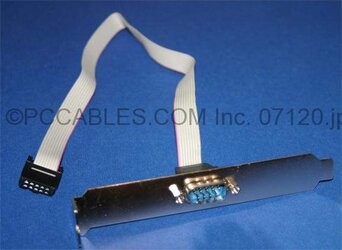- Joined
- Apr 7, 2009
I have a cable that may have a damaged (crushed) wire and wish to test it.
The cable is a BB9-Male TO IDC-10 serial cable for which an instance of is depicted in:

http://pccables.com/cgi-bin/orders6.cgi?action=Showitem&id=ID901315&partno=07120
The potentially damaged wire is the one opposite the the pink-colored PIN1 wire.
How do I go about testing the cable to see if it can still fully perform?
The cable is a BB9-Male TO IDC-10 serial cable for which an instance of is depicted in:

http://pccables.com/cgi-bin/orders6.cgi?action=Showitem&id=ID901315&partno=07120
The potentially damaged wire is the one opposite the the pink-colored PIN1 wire.
How do I go about testing the cable to see if it can still fully perform?